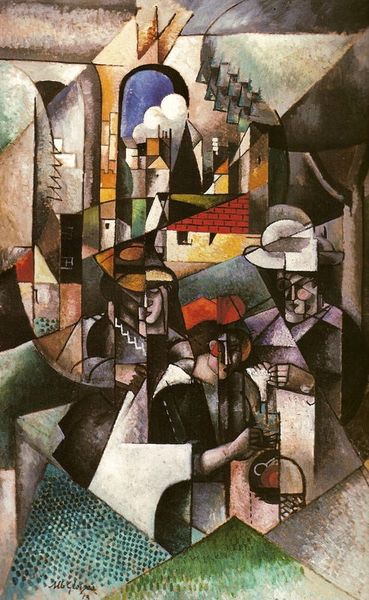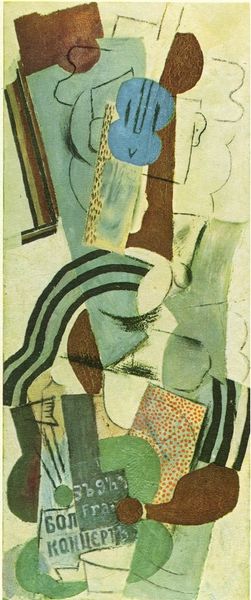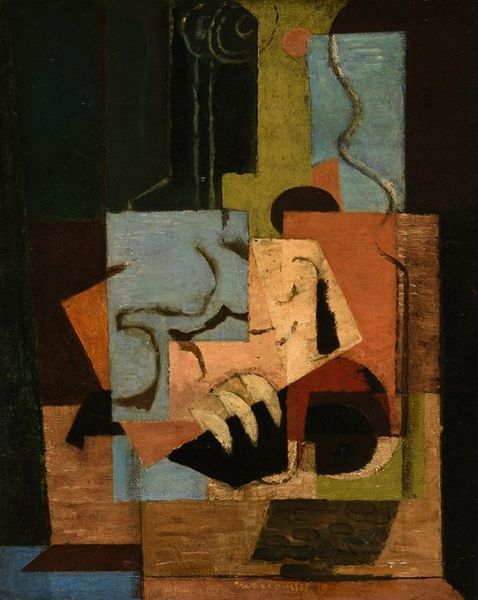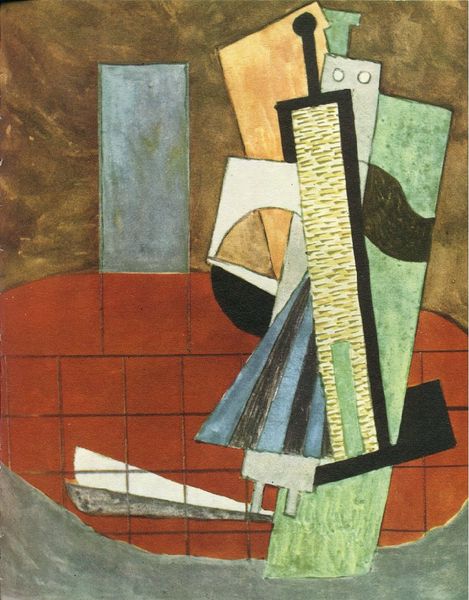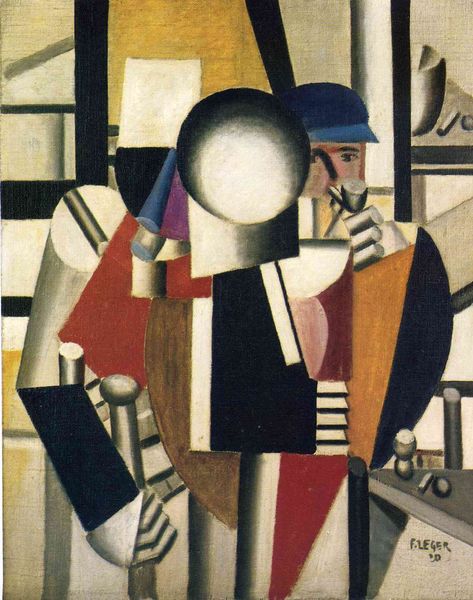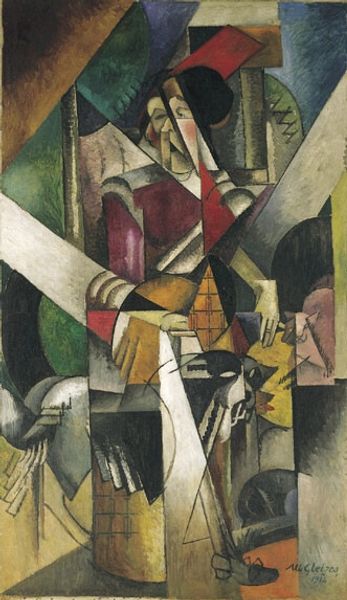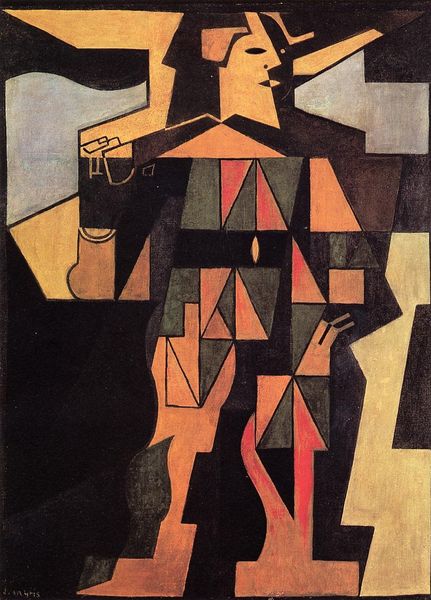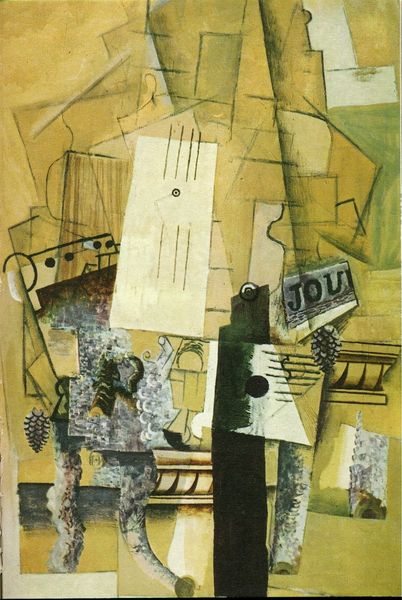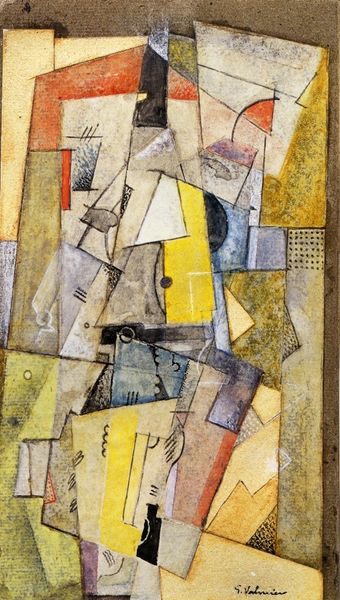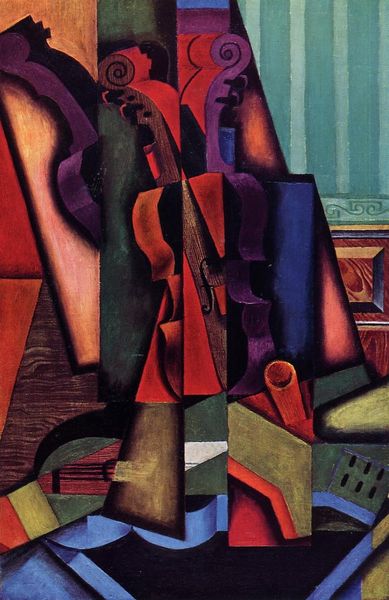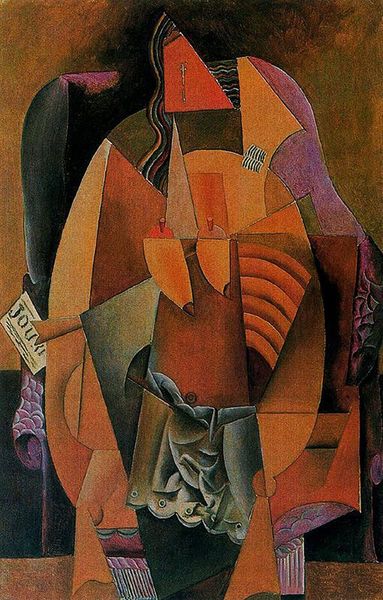
painting, oil-paint
#
cubism
#
painting
#
oil-paint
#
painted
#
handmade artwork painting
#
oil painting
#
geometric-abstraction
Dimensions: 131 x 90 cm
Copyright: Public domain US
Curator: Here we have Pablo Picasso's "Man with Guitar," completed in 1913 using oil paint. It exemplifies his exploration of Cubism. Editor: My first impression is of something fragmented, a puzzle not quite fitting together, a mood that balances quiet contemplation and energetic disarray. Curator: That resonates with the context of the period. Picasso, alongside other Cubists, was challenging conventional modes of representation, reflecting the burgeoning shifts in society and the questioning of established power structures. Consider the geometric abstraction—it's not just about breaking down form but also dismantling visual norms that upheld particular societal perspectives. Editor: The guitar is interesting. The fragmented elements create a powerful symbol. Throughout centuries musical instruments, specifically the lyre and the guitar, evoke very deep emotions and express harmonic convergence. I can feel this powerful emotional undertow beneath its structure. Curator: Precisely. This deconstruction can be interpreted as a challenge to the bourgeois art establishment of the time. The choice to depict a musician, a figure often marginalized, hints at an alignment with the working class, embodying Picasso's socio-political concerns and conveying them through an image known for representing emotional depth. Editor: Also, it appears that one component recalls some visual elements and alludes to the advertising billboards in Paris at that time, incorporating ordinary life into the artwork's symbolic structure. Curator: Indeed, it is an incorporation of urban modernity, isn't it? This demonstrates Cubism’s ability to bring mass culture to light. By taking familiar yet visually overlooked signs, these elements find an elevated level of contemplation through fine art. Editor: These commonplace objects were being reborn. Looking closely, they seem so familiar while creating new meanings, too. They trigger something primordial while conveying novelty. It feels like a crossroad. Curator: And those crossroads of art, society, and cultural symbols allow us to re-evaluate not only Picasso's work but the era itself and how we see its continued legacy. It reveals how cultural and political dynamics shape and reshape art forms over time. Editor: Absolutely. I leave this encounter seeing not only the disrupted image of the man, but rather an art piece deeply resonant in our memory, while it also pushes boundaries forward to change how the world and we observe its components, at all.
Comments
No comments
Be the first to comment and join the conversation on the ultimate creative platform.
